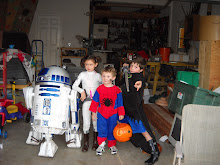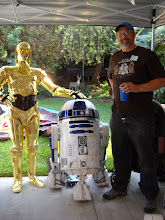


The painting has been hard. I got good results on the body with the Rustoleum Satin White that the club recommends, but when I put clear coat on it, it came out terribly. Lots of runs and rough spots. I've tried a couple of different kinds of clear coat now in several different conditions and it has never come out nice or clean. I'm not sure what I'm doing wrong. I've tried to control for humidity, heat, thickness of coat, etc. But no matter--it still looks like crap. So I stripped the clear coat off of the body and switched to gloss white. That gave me good reliable results.
The club method for R2 blue has been mixed. I have gotten it to come out really rich and deep blue and it looks like it has that depth that it is supposed to, but it's been hard to do that consistently. I've sanded several parts and started over. Again the clear coat has been finicky.
I tried several different kinds of metallic aluminum, chrome, and silver paint, trying to get the one that looked the best and looked most like raw aluminum. I finally settled on a Rustoleum metalized silver. The color's good but it doesn't seem to be very durable. Have to figure out the clear coat problem.
Assembly went pretty well since I did so much dry fitting of everything before painting. I started trying to mount the assembled pieces on the body with styrene solvent cement after I had cleaned the mating surfaces, but a gel super glue worked much better. Gives good control and very little seepage, and it doesn't seem to eat up the paint.
I'm working on the remained body components now: front vents, surrounds, utility arms, ankle details, etc. I'm going to try to make some of those by hand instead of going with resin or aluminum. Looking ahead to the electronic system and trying to plan the lights, motors, motor mounts, and sound system. There are a lot of decisions and lots of research.






















